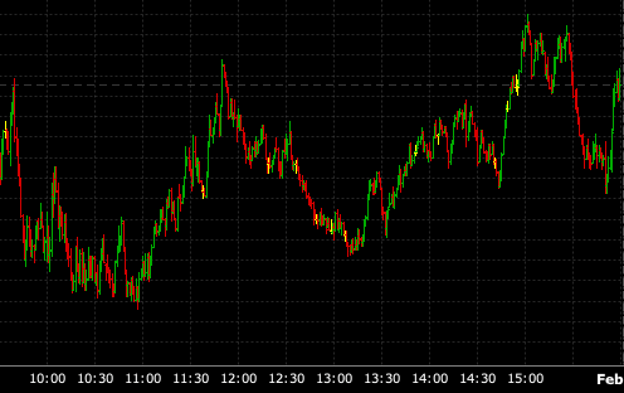Individual Risk Vs. Systemic Risk
By: Steve Sosnick Chief Strategist
As some of you may already know, I was privileged to guest-author the “Striking Price” column for this week’s Barron’s.The headline, “Zero-Dated Options Are Hot—but Not Hazardous”, was well-suited for the article’s main thrust: that so-called “0DTE” options do not pose a major systemic risk. As a product, they are evolutionary, not revolutionary. These options utilize well-tested systems for trading and clearing that have been adding strikes and expiration dates steadily for decades.
But don’t lose sight of this basic fact: these can be very risky products for individual investors.
At a superficial level, 0DTE options are very attractive to speculators. They offer traders a seductive opportunity – the potential for significant percentage returns from a trade with a low cost of entry. These options expire within a day, so by definition, buyers pay a minimal time premium. Yet in the case of investing, and especially in the options world, “low-priced” is not necessarily cheap. In fact, the opposite is frequently the case. For options, “rich” or “cheap” is typically defined by implied volatilities and how they compare to the likely and actual movements of the underlying security, not the dollar amount of the option.
About two years ago we noted how speculators had begun to gravitate towards expiring SPY call options on Friday afternoons. Markets were frothy, and new traders were discovering that if enough of them bought en masse, they could indeed influence stocks or ETFs to move higher. The new 0DTE options now allow that activity to occur any day of the week, but now, as then, the activity tends to return only when circumstances are ripe for speculation. As we noted in the Barron’s column, 0DTE options came on the scene last spring, in a generally bearish year. Only during this year’s renewed love for risk assets did 0DTE options and frenetic call buying return to the fore.
Let’s look at the very real-world example of SPY options trading last Friday. To be clear, we will be discussing weekly expiring options, not the new Tuesday-Thursday expirations that offer 0DTE options every day of the week.But on Friday they become zero-dated – just like every other expiring weekly option. Every option becomes zero-dated on expiration day. This has been and will always be the case.
The chart below shows that SPY opened lower on Friday, took another leg lower shortly after the open, then bounced a couple of times off its lows. I noted at the time that the market’s lows roughly coincided with the convergence of the 50, 100, and 200-day moving averages and a major trendline of the S&P 500 Index (SPX). Sometimes it appears that “buy-the-dip” is simply reflexive; on Friday there was a good technical basis to speculate on a bounce. Investors who chose to trust the support levels had a wide range of instruments at their disposal. Traders who wanted to make a quick buck would have naturally gravitated to expiring options.
SPY, 1-Day Chart, 1-Minute Bars, February 24th, 2023

Source: Interactive Brokers
We closed near the day’s highs, so it is logical to think that call buyers had a good day. Not so fast.SPY closed at $396.38, meaning that those traders who bought the $396 calls below $0.38 made money. The problem is — most traders paid more.
According to Bloomberg data, 504,707 of the expiring SPY $396 calls traded at a volume-weighted average price (VWAP) of $0.7985, more than double the final settlement price. Their data shows that only 32,992 options traded at or below 38 cents. That line was the most actively traded, with an open interest of 4 – yes 4 – options prior to Friday. Almost every option that traded on Friday came into existence that day.
To be fair, those who focused on the $395 strike did a bit better. The 372,832 calls had a VWAP of $1.1942, which was less than the $1.38 settlement value. That’s a nice profit for the average buyer, but hardly a slam-dunk win. And bear in mind that nearly 1 million puts with strikes in the $394-396 range traded, only to expire worthless.
If the buyers lost, then the sellers won. Heck, it’s well-known that over time most options expire worthless, meaning that sellers more often prevail. But the recent popularity of short-term options trading has been driven by buyers. Those buyers tend to be speculators. And all too often, speculators are just gamblers.
Over time, gamblers tend to lose money. Sure, thanks to low commissions, the “vig” is lower in options trading than in casino or sports betting, but while that improves the speculators margin for success, it doesn’t make it likely. Short-term options purchases can offer the possibility of big returns on relatively small outlays, but so do other forms of gambling. Go to a racetrack or casino and look around. Do most of the people at the rail or the table look happy? Usually not. If one tends to lose money in small increments rather than large ones it can still be quite hazardous to one’s financial health.
Even if the risks of 0DTE options may be overstated on a macro level, they can still be quite high on an individual level – especially over time.
More By This Author:
Wagers On Fed Tightening Expectations Jump On The Back Of A Disappointing PCE Report
Buzzword Day: Nvidia And AI, FOMC And Disinflation
China Zigs While the G7 Zags
Disclosure: ETFs
Any discussion or mention of an ETF is not to be construed as recommendation, promotion or solicitation. All investors should review and consider associated investment ...
more


